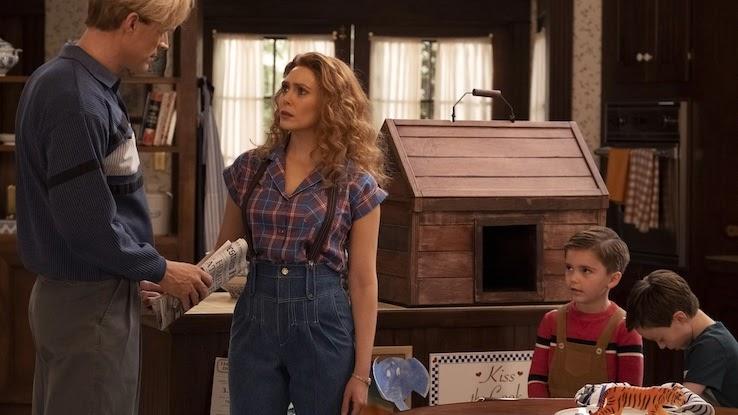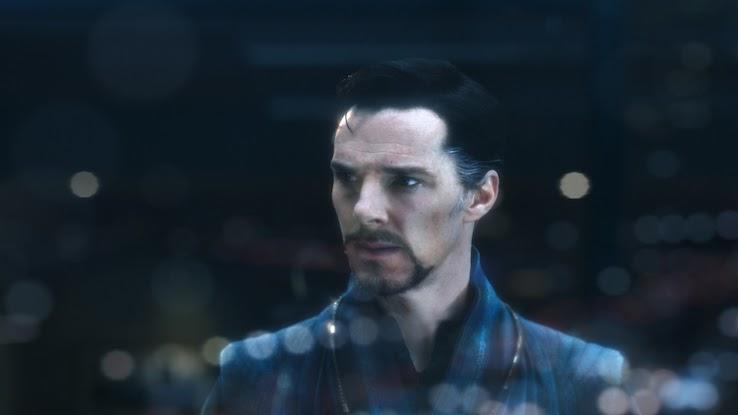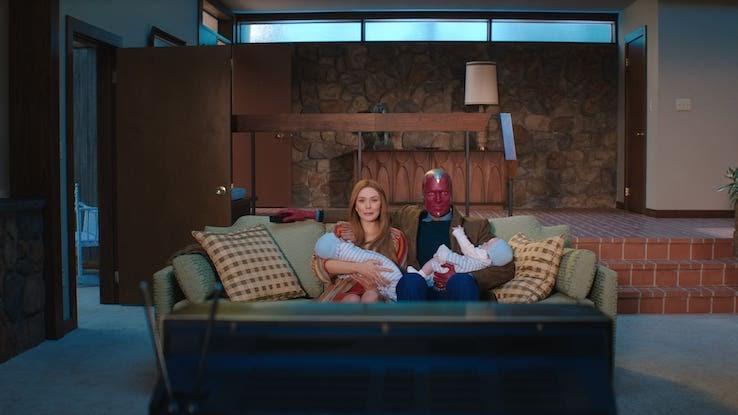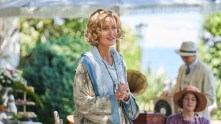
We need to talk about WandaVision‘s finale. Episode 9, the last one in the series, is already available on Disney Plus and, with it, comes a closure to the whole Wanda (Elizabeth Olsen) and Vision (Paul Bettany) living in suburbia and paying homage to classic TV sitcoms situation.
Before you ask, no. There are no plans for a second season of WandaVision. The show was always designed as a limited nine-episode series. And if you’re thinking that Marvel could be rethinking that because of the show’s success, don’t get your hopes up. In a recent interview published March 2, the show’s director, Matt Shakman, reiterated season 2 of the show isn’t in Marvel’s plans. Also, notice how episode 9 of WandaVision was titled “The Series Finale,” not “The Season Finale.”
But let’s get into how the show ended, what that ending means for the characters, and how WandaVision‘s conclusion will affect the rest of Marvel Cinematic Universe (MCU).
And be advised, if you still haven’t watched episode 9 of WandaVision and you are spoiler-averse, you might want to watch it first and then read this article. Spoilers ahead.
How Has WandaVision Ended?
Let’s rewind a bit, because we actually started getting an origin story for Wanda in episode 8 of WandaVision, “Previously On.”
In it, we saw how she lost her parents at a very young age. According to the witch Agatha (Kathryn Hahn), Wanda’s interaction with the Mind Stone — one of the six cosmic gems featured in the recent Avengers films — during her rebellious years at HYDRA amplified her powers. And her grief over Vision’s death augmented them even more, allowing her to use Chaos Magic. This special brand of magic permitted her to create Westview’s Hex — that perfect recreation of an ever-changing world out of a TV sitcom — and conjure back Vision. Agatha identifies Wanda as the powerful Scarlet Witch.
In episode 9, “The Series Finale”, Wanda faces Agatha. The former nosy neighbor takes power from the undeserving and wants Wanda to attack her. (Doing so would allow Agatha to absorb Wanda’s strength.) Throughout the episode Agatha imparts useful bits of exposition, like the fact that the Scarlet Witch isn’t born, but formed. She has no coven and her destiny is to destroy the world.
Wanda opens the Hex she’s created to let the inhabitants of Westview escape — they don’t want to live under her mind control. But the opening also allows S.W.O.R.D.’s Director Hayward (Josh Stamberg) and his troops to enter the Hex. And Wanda realizes Vision, and their twin sons, can only live inside of that place she’s created. “You’ve tied this family to this twisted world and one can’t exist without the other,” Agatha explains.
Meanwhile White Vision — that would be the real Vision’s body brought to life by Hayward sans memories — fights Wanda’s Vision. Wanda’s Vision manages to reason with his alter ego, employing a thought experiment about the Ship of Theseus. Wanda’s Vision recovers White Vision’s memory and White Vision just leaves, no longer a threat.
All the trips Monica Rambeau (Teyonah Parris) has taken in and out of the Hex during the season have altered her DNA. To the point where she can stop bullets and protect Wanda’s twins from Hayward. Hayward’s plan was to accuse Wanda of terrorism but FBI agent Woo (Randall Park), Monica Rambeau and Darcy (Kat Dennings) know his real motives and they make sure he’s arrested.
Agatha gets overconfident about her ability to harness Wanda’s powers. But Wanda knows more than she’s letting on, and casts some runes that render Agatha powerless. Wanda’s victory over Agatha comes with the protagonist’s whole transformation into Scarlet Witch. Wanda also decides Agatha is going to be Agnes again, the nosy neighbor in Westview, who could be helpful in case Wanda needs her in the future.
The Hex is diminishing, Wanda is letting go. She and Vision take the twins home, put them to bed and say goodbye to their children and to one another. Wanda’s family can’t survive outside that world she’s created. “I have been a voice with no body, a body but not human and now a memory made real. Who knows what I might be next?” Vision tells Wanda before disappearing.
And with that, Wanda finds herself on the plot of land where her house was standing. At Westview’s main square, Agent Woo is organizing the FBI investigation. Before Wanda flies off, Monica tells her goodbye.
And then comes the mid-credits sequence. In this one Monica is told by an agent that she’s needed inside the theater. When they go inside, the agent turns into a Skrull — you know, the shape-shifting green creatures we get to know in Captain Marvel. The Skrull tells Monica she was sent by a friend of Monica’s mother and that Monica is needed in what looks like outer space. My bet is that the friend in question is Nick Fury (Samuel L. Jackson), who we saw on very friendly terms with the Skrulls at the end of Spider-Man: Far From Home.
The post-credits sequence is a bit more confusing. After a few arresting shots of mountains, lakes and nature, we see Wanda having tea outside a little cabin. The tea kettle starts making noise and she goes inside to pour more water. The camera moves into the bedroom and we see another Wanda, this one attired like Scarlet Witch and hunched over the Book of the Damned, a sort of dark magic manual. Could she be trying to find the scenario in which her Hex spell is successful and she can have a happily ever after with Vision and the kids in suburbia?
What Does WandaVision’s Finale Hint At for Future Marvel Titles?
Even before WandaVision concluded, we already knew we’d be seeing Wanda Maximoff next in the feature film Doctor Strange in the Multiverse of Madness, which is set to be released March 25, 2022. The news was actually announced in the summer of 2019 when a second Doctor Strange was officially confirmed, as well as Benedict Cumberbatch’s return to play the sorcerer.

At the time, the sequel was described as “the first scary MCU film.” We’d like to see how Wanda/Scarlet Witch fits in that scary universe with Doctor Strange (Cumberbatch) and Wong (Benedict Wong), a Master of the Mystic Arts from the first Strange film.
But “The Series Finale” hints at other things. For one, White Vision is free, flying and with his memory supposedly restored. Does that mean we’ll see him again? Could White Vision and Wanda be destined for one another? Is that what WandaVision‘s screenwriters were hinting at with Wanda and Vision’s last conversation?
And then, on the other hand, there’s Monica Rambeau. She’s needed by Nick Fury, or some other friend of her mother. And Teyonah Parris, the actress who plays her, has already been confirmed to appear in Captain Marvel 2, which is expected to be released on November 11, 2022.
The WandaVision Formula
Mythology and plot aside, WandaVision has also been Marvel Studios’ first (and very successful) attempt at expanding their MCU universe into the television landscape. Of course, the lines between film and TV are blurrier than ever. Especially after a year where we’ve watched everything on phones, tablets or smart TVs, regardless of their intended or initial format.

At times, the show did feel like an over-blown origin story that could have been told in a feature format. But its homage to TV sitcoms and the fact that every episode referenced a different title and a different decade of America’s TV history justifies its division into distinct episodes.
The Falcon and the Winter Soldier is the MCU show to follow in WandaVision‘s steps. It premieres on Disney Plus on March 19. And June 11 will be time for Loki. I’m curious to see if those two shows will feel appropriate for the TV format, considering there’s no meta television plot for them, at least that we know of. WandaVision, and The Mandalorian, have betted on the 30-minute-or-so weekly episodes. Both Loki and Falcon and the Winter Soldier are expected to have six 40-50 minute episodes each. That episode length is much more on par with traditional TV dramas, but not the six episodes per season, which is shorter than the usual 8-13 chapters per season of shows on cable or streaming. So I’m wondering if those two shows will feel adequate in the format they’re presented in or if they’re going to show signs of a drawn-out plot. Maybe, as it happened with WandaVision, Marvel is going to show us genre conventions are here to be broken once again.
Time will tell. One thing is clear: WandaVision has convinced me to keep my Disney Plus subscription for the time being.






